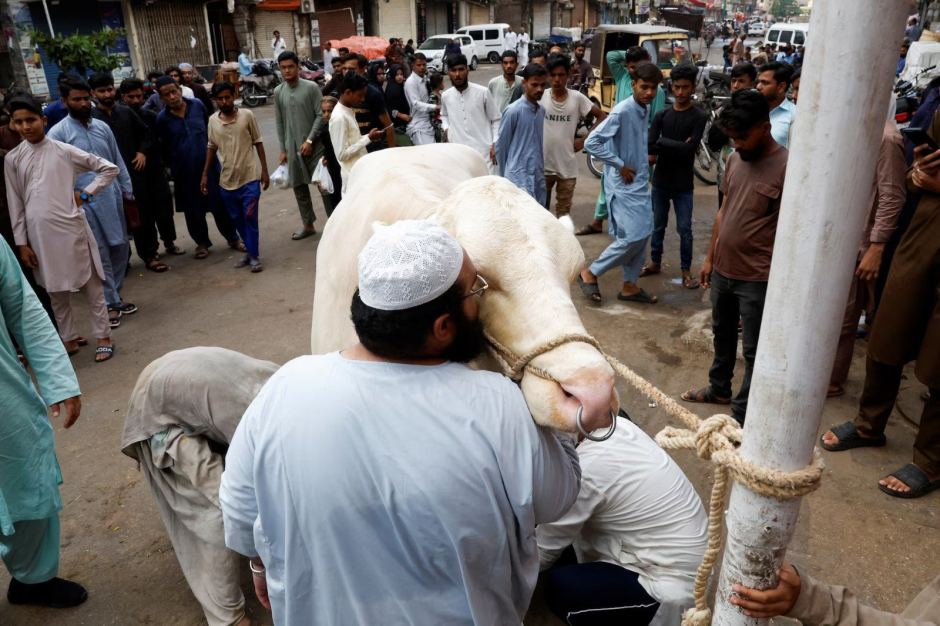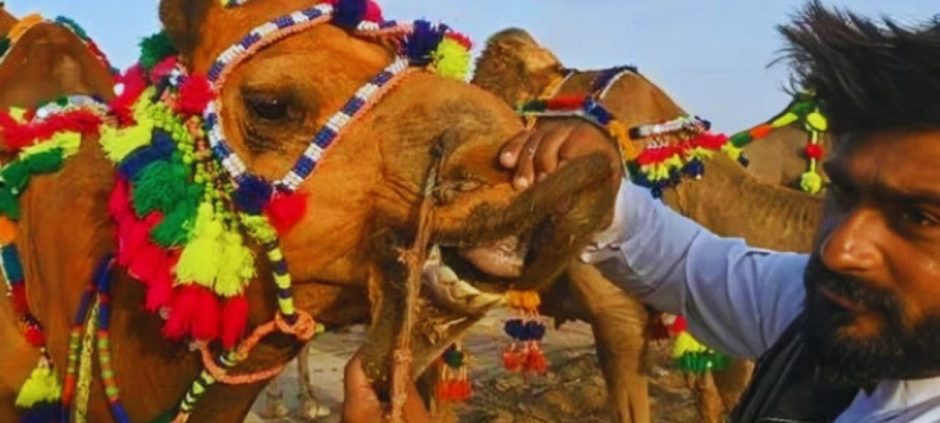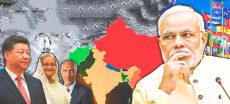By the time Eidul Azha actually arrives, the country has already surrendered to its spirit. Empty plots quickly transform into crowded mandis (animal markets), where people inspect goats by checking their teeth — a crucial detail for determining their age and value. On roads, traffic often slows behind herds of cows walking as if they own the place — and in a way, they do.
No one flinches when a Suzuki drives by overloaded with animals stacked tightly, their legs poking out from every possible space. Children rush outside with bags of fodder, leaving trails behind for their newly “adopted” goats. And, of course, there’s always that one cousin bragging about buying a cow or even a camel — because a goat just isn’t grand enough.

For many, this Eid is tied deeply to childhood memories. Visits to the mandi introduced us to the phrase “munasib lagao” (quote a reasonable price). We all have stories from Bakra Eid — a goat escaping through the streets chased by uncles, or a panicked cow smacking someone in the face. Above all, who can forget the thrill of Eid morning: the sound of knives being sharpened, the smell of raw meat, and our mothers dividing qurbani meat into plastic bags?
There’s an intimacy to this festival that lingers long after the meat is gone.
But Somewhere, the Spirit is Fading
Despite all the affection we show, the comfort of the animals is often overlooked. Goats are tied tightly under the blazing sun with no shade. Cows stand for hours on hot concrete. Water is often forgotten as excited children tug their ears or climb on their backs. We dress them in glittering garlands and laugh when they stumble, as if their discomfort is part of the celebration. While often unintentional, such negligence borders on cruelty.
Qurbani for the Algorithm
Another shift is the performative nature of sacrifice. Qurbani now comes with front-facing cameras. From the moment animals arrive, their every move is documented — from WhatsApp forwards to Instagram reels.
Admittedly, much of it is funny: a goat named “Pathan Khan” eating biryani, or one balancing on a bike. But humor aside, this trend turns animals into entertainment, blurring the line between sacrifice and spectacle. The disturbing result is full videos — even live streams — of the sacrifice being shared. It begs the question: who watches this? What does it achieve beyond sensationalizing an act of worship?

The Price War
In the weeks leading up to Eid, prices soar. An animal becomes a status symbol — no longer about sacrifice, but about competition. Sellers exploit the moment, knowing that most buyers can’t leave empty-handed. The ritual, meant to uplift, starts to feel like it excludes the very people it was designed to help.
Blood, Smell, and Tears
Infrastructurally, most cities — especially Karachi — aren’t equipped for Eid’s scale. The aftermath isn’t pretty: animal waste left rotting on streets, blood mixing with sewage, and a stench that lingers. Add rainfall, and the situation turns into a foul disaster. Sanitation workers, underpaid and overworked, are left to manage the mess.
In a religion that champions compassion and cleanliness, the irony is hard to ignore. This is meant to be a ritual of honor — not one that disregards life or dignity.
Not a Rejection, but a Reflection
To be clear, this isn’t a rejection of Eid. It’s a longing — a call to preserve what made it meaningful. Eid is still one of the rare moments of national unity. The BBQ gatherings, the chaos in kitchens, the shared spirit — they’re all beautiful parts of it. But celebration should never come at the cost of compassion.
Some do get it right: families who treat animals gently, butchers who work cleanly, and parents who teach children not just what is happening, but why.
Bakra Eid can still be beautiful — if only we let it be.











